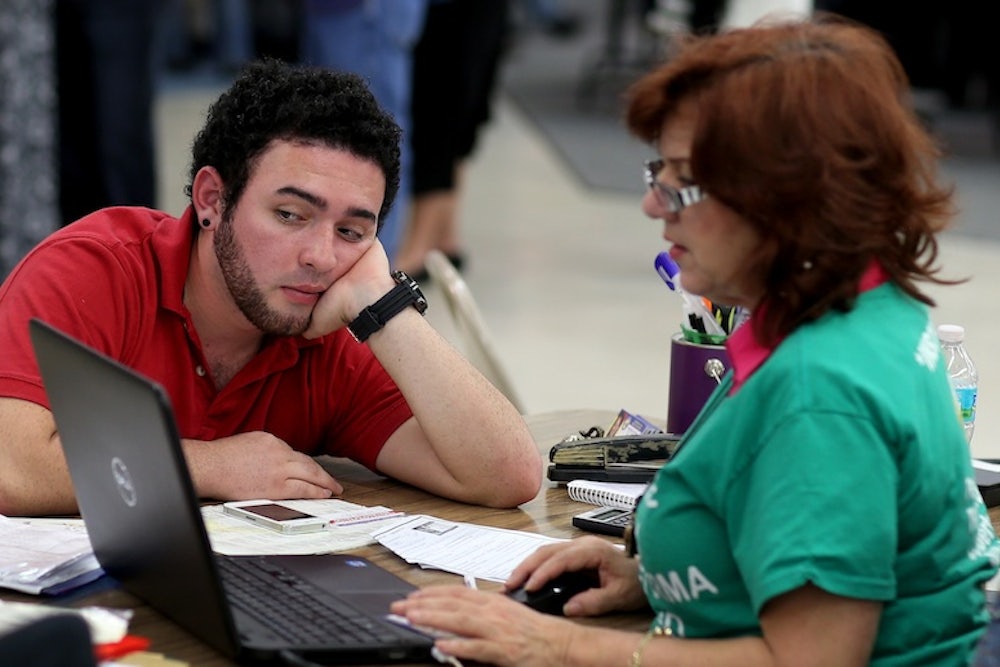One of the big mysteries about Obamacare is what it’s doing for the uninsured. Supporters like to cite raw enrollment numbers, like the 7 million people who have signed up through the new Obamacare marketplaces, as proof the law is making a big difference. Detractors who think the White House is “cooking the books” point out that the raw figures don’t tell us much—because, for example, they include people who previously had insurance.
A lack of hard, reliable data has made settling this debate difficult, although that hasn’t stopped the likes of Ted Cruz from suggesting that the net effect of the law will be to increase the number of people without coverage.
Now we have a little more information, in the form of a new study. Although tentative and murky, like every other report on this question, it shows pretty clearly that Cruz is wrong. The number of Americans without health insurance is almost certainly falling and it's falling by more than a tiny amount. But in order to match the progress that the experts predicted for 2014, the number of uninsured Americans would still have to fall by a lot more. And it's a very open question whether that will happen.

The study comes from the Health Reform Monitoring Survey (HRMS), which researchers at the Urban Institute conduct and the Robert Wood Johnson Foundation partly finances. In early 2013, according to the survey, 17.6 percent of non-elderly adults (people between the ages of 18 and 64) had no insurance. By early 2014, the survey found, the percentage was down to 15.2 percent. If I’ve done my math right, that corresponds to an additional 4.8 million adults who now have insurance. If you want to start counting in Septmeber of 2013, right before open enrollment began, the gain is even bigger—5.4 million adults.
These figures are not precise. They represent survey results, adjusted to represent a national sample, and they have a margin of error. But the results point in the same general direction as data collected by the Gallup organization and the Rand Corporation (as first reported by Noam Levey of the Los Angeles Times).
Would saving approximately 5 million people from uninsurance be a big deal? On the one hand, it's far less than the 13 million people the Congressional Budget Office has said it expects to gain insurance because of the law in its first year. On the other hand, the figure does not include young adults who got coverage by signing onto their parents’ plans and those in states that expanded their Medicaid plans early. (Most estimates put the young adult expansion at 2 to 3 million, although some conservatives have recently suggested the real figures are much lower. More on that soon.) Also, the survey data ends with early March, which means it doesn’t include the final surge of signups before the end of open enrollment. And more people will continue to get coverage throughout the year, particularly those living in states that are expanding eligibility for their Medicaid programs as the law's architects originally envisioned.
One very real possibility is that the final number ends up higher than most detractors expect but lower than most supporters hope. But there's just no way to know right now. And whether such a difference would be a big deal is, obviously, a matter of opinion.
